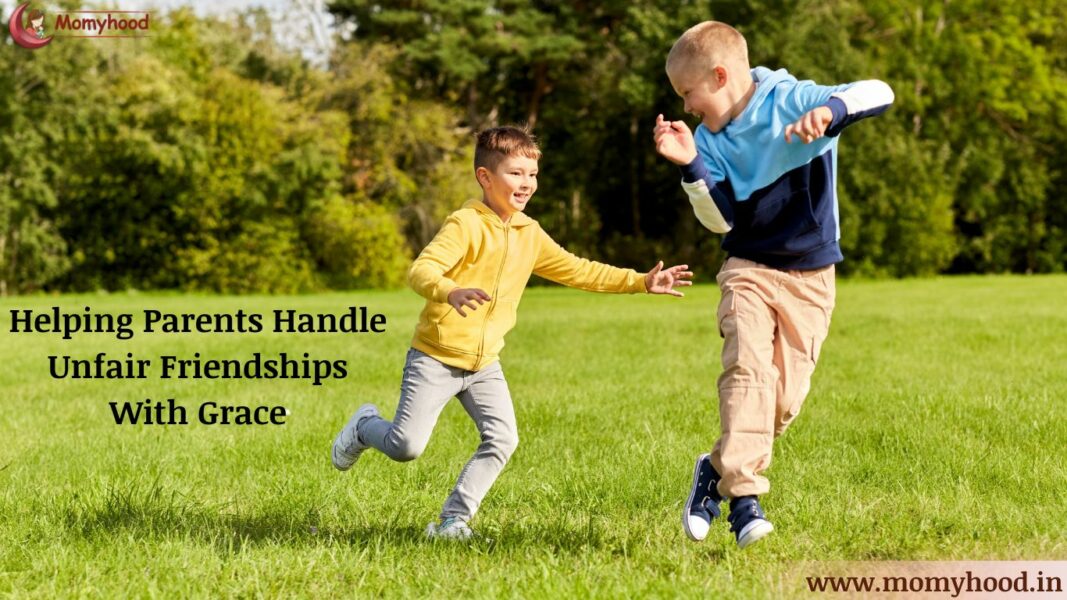“Sometimes, the one who stays calm gets blamed… simply because they didn’t cry.”
Friendships are beautiful, but they come with their own challenges — especially when there is an age gap. One real-life situation shared by a mother brings this issue to light. Her 11-year-old son has a younger friend who is 8. While they play well together, any disagreement between them ends the same way: the younger child cries, and the older child is automatically blamed — even when he isn’t at fault.
What’s more complicated is that both children are from Indian families living in a place where very few Indians reside. This makes every friendship seem more valuable and every misunderstanding feel heavier.
The Pattern: A Familiar Story
- Two children play.
- A disagreement arises — maybe over a toy, a turn, or a rule.
- The younger one cries loudly.
- Adults or other children jump in.
- The older one is blamed, expected to be more mature.
While the younger child may not be intentionally manipulative, their emotional response (crying) quickly shifts the situation. And the older one — often trying to explain himself calmly — becomes the default culprit.
Over time, this creates:
- Confusion and frustration for the older child
- A sense of injustice
- A strained relationship between the families
- Silent emotional pressure on the parent who sees it all
So, what can you do?
Empowering the Parent and the Child (Without Confrontation)
This blog is for the mother who observes the pattern, wants to protect her child, but doesn’t want to get into direct confrontations or dramatic confrontations. The good news is: you don’t need to.
📣 Loved what you read? Want to go deeper into conscious parenting? ✨ The Power of Manifestation in Parenting is now available — A soulful guide packed with real-life tools like affirmations, energy shifts, and sleep talk that I personally use with my son, Hitarth. 💛 Start your journey toward calmer, connected parenting today. 🎉 Launch Offer: Only ₹99 (limited-time price!) 📲 Instant download. No waiting. 👉 Grab your copy now!.
Here are gentle, practical, and deeply effective steps:
1. Start with Silent but Strong Support
Your child may not always say it, but they need to know: you believe them.
Reassure your child gently, in your everyday language:
- “I understand what happened. You’re not wrong for feeling upset.”
- “Crying doesn’t mean someone is right — it means they are expressing differently.”
Let home be the safe space where they are seen, heard, and validated.
2. Help Them Decode the Situation
At 11, children are mature enough to understand dynamics. You can help them observe that:
- The younger child is still learning emotional regulation.
- They might cry quickly out of frustration or habit.
- That doesn’t make them bad — just younger.
Explain, without bitterness, that age brings different ways of handling emotions. This shifts your child’s frustration into understanding — and that’s empowering.
3. Teach Response Tools, Not Retaliation
Give your child calm scripts to say when a disagreement happens:
- “I didn’t do anything to hurt you. If you’re upset, we can take a break.”
- “I’m not fighting. I just wanted my turn.”
- “Let’s do something else.”
Role-play these responses at home. Make it fun, like a game. This gives your child confidence to express their side, without being reactive.
4. Choose Structured Play Over Free Play
Free play often leads to conflicts because it lacks boundaries. Instead, suggest playdates that are:
- Activity-based (crafts, games, puzzles)
- Time-limited (1–2 hours)
- Supervised lightly from a distance
Structure gives both children less space to clash and more chances to cooperate.
5. Create Boundaries Without Making Announcements
You don’t need to say, “We’re reducing playtime.” Just do it. Some easy ways:
- Say your child has homework
- Invite other children occasionally
- Suggest alternate timing when needed
This avoids emotional confrontation while still creating a safe buffer.
6. Maintain a Personal Journal
Keep a quiet record of what happens. Write down dates, incidents, tone of situations. This is not about proving anyone wrong but about:
- Tracking the emotional pattern
- Helping you notice improvements or decline
- Preparing you, in case things escalate and you need to communicate clearly
7. Give Your Child the Real-Life Perspective
When your child comes to you and says, “They always blame me,” you can say:
“Sometimes, the world doesn’t see clearly. But I see you. And the way you handle it will make you stronger in the long run.”
Remind them:
- Their calmness is a strength
- Their version matters, even if others don’t hear it right away
- Walking away is not weakness, it’s wisdom
8. Reinforce Positive Relationships Elsewhere
Sometimes we invest too much in one friendship. Help your child build confidence by diversifying their social experiences:
- Enroll them in a hobby class
- Introduce them to cousins or kids from your friends circle
- Encourage solo hobbies too (drawing, coding, reading)
Let them know that one friendship doesn’t define their worth.
Final Thoughts
Not all problems require direct confrontation. Many of them need awareness, gentle distancing, and emotional skill-building.
You are already doing an amazing job by observing, supporting, and choosing your response with care. You don’t have to be loud. You don’t have to fight.
Just continue to protect your child’s emotional space — with quiet strength and graceful boundaries.
And when they grow up, they will remember: “My parent always stood by me… even in silence.”
Your comments and shares do more than just support our blog—they uplift the amazing moms who share their stories here. Please scroll down to the end of the page to leave your thoughts, and use the buttons just below this line to share. Your support makes a big difference!



